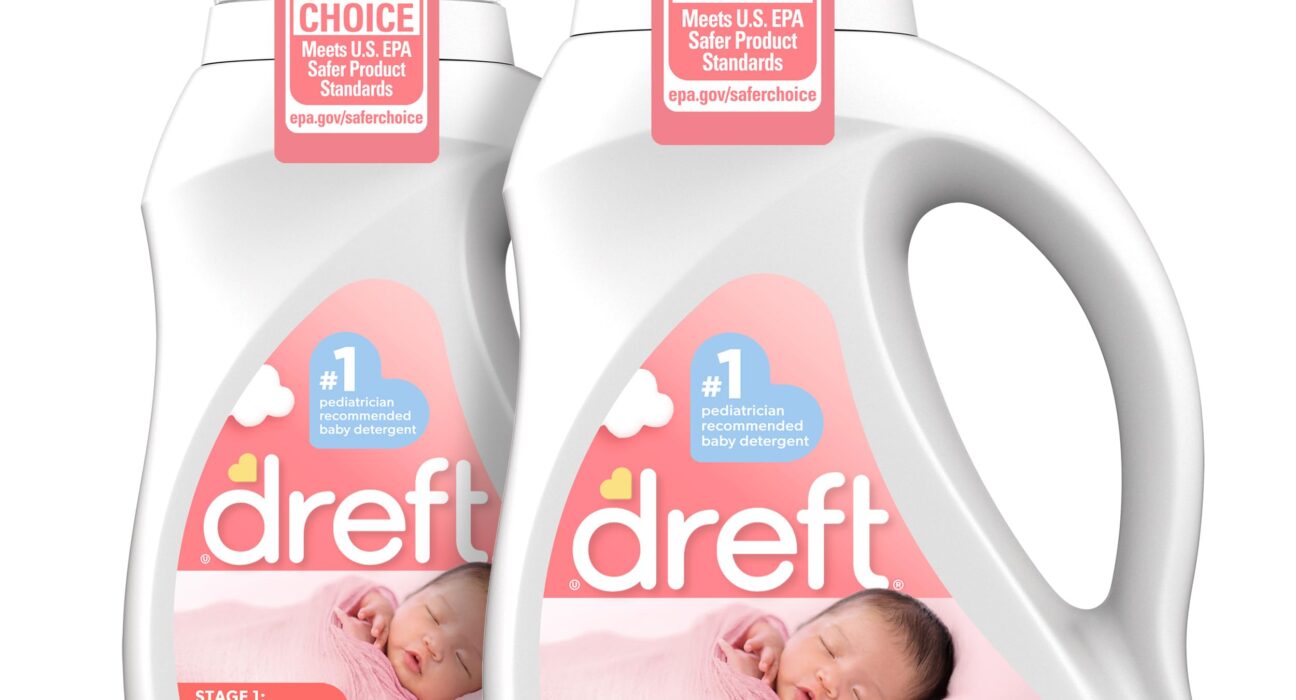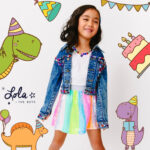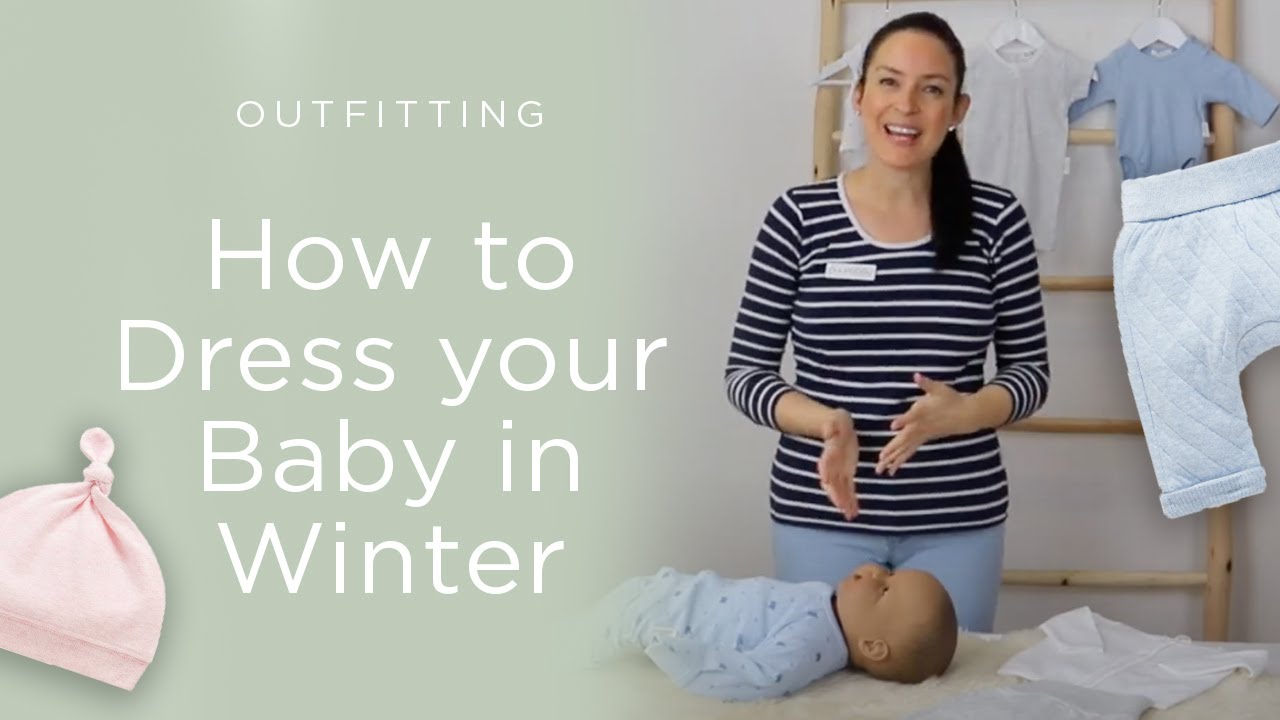Finding the right baby clothes for sensitive skin can be challenging. Babies with delicate skin need special care.
Sensitive skin requires soft, breathable fabrics. Many parents struggle with finding clothes that won’t irritate their baby’s skin. The wrong material can cause rashes and discomfort. This blog post will help guide you in choosing the best clothes for your baby’s sensitive skin.
We’ll explore fabric types, important features, and care tips. By the end, you’ll know how to keep your baby comfortable and happy. Let’s dive into the world of baby clothes designed for sensitive skin.
Choosing The Right Fabric
Choosing the right fabric for baby clothes is crucial. Babies with sensitive skin need special care. The fabric you choose can make a big difference. It can help prevent rashes and irritation. Let’s explore the best fabric options for your little one.
Natural Fibers
Natural fibers are the top choice for baby clothes. They are gentle on the skin and less likely to cause allergies. Here are some excellent natural fibers to consider:
- Cotton: Soft, breathable, and hypoallergenic. Perfect for sensitive skin.
- Bamboo: Silky and naturally antibacterial. It’s also eco-friendly.
- Wool: Warm and moisture-wicking. Use merino wool for extra softness.
Breathable Materials
Breathable materials are essential for baby clothes. They help regulate body temperature and keep the skin dry. Here are some breathable materials to look for:
- Muslin: Lightweight and airy. Ideal for swaddles and summer clothes.
- Linen: Strong, absorbent, and dries quickly. Keeps babies cool.
- Organic Cotton: Free from harsh chemicals. Kinder to sensitive skin.
Choosing the right fabric ensures your baby’s comfort. Opt for natural and breathable materials. Your baby’s skin will thank you!
Hypoallergenic Options
Choosing baby clothes for sensitive skin can be challenging. Your baby deserves the best, and finding the right hypoallergenic options is crucial. Let’s explore some great options that can help keep your baby comfortable and rash-free.
Organic Cotton
Organic cotton is a fantastic choice for babies with sensitive skin. It is grown without harmful chemicals, making it gentle on your baby’s skin. Organic cotton is also breathable, keeping your baby cool and comfortable.
Here are some benefits of organic cotton:
- Soft and gentle on the skin
- Free from pesticides and harmful chemicals
- Breathable fabric
Many brands offer organic cotton baby clothes. Look for certifications like GOTS (Global Organic Textile Standard) to ensure the quality of the fabric.
Bamboo Clothing
Bamboo clothing is another excellent option for babies with sensitive skin. Bamboo fabric is naturally hypoallergenic and has a silky texture. It wicks moisture away, keeping your baby dry and comfortable.
Benefits of bamboo clothing include:
- Hypoallergenic properties
- Soft and smooth texture
- Moisture-wicking abilities
Here is a comparison table for quick reference:
| Fabric | Benefits |
|---|---|
| Organic Cotton | Soft, chemical-free, breathable |
| Bamboo | Hypoallergenic, silky texture, moisture-wicking |
Both organic cotton and bamboo clothing are great choices. They provide comfort and protection for your baby’s sensitive skin.
Comfortable Design Features
Choosing the right baby clothes for sensitive skin is important. Babies need garments that are soft, gentle, and comfortable. Many parents struggle with finding the perfect balance of comfort and practicality. This section highlights some key design features that ensure ultimate comfort for your little one.
Seamless Construction
Seamless construction reduces irritation on sensitive skin. Traditional seams can cause chafing and discomfort. Clothes with seamless designs prevent these issues. They offer a smooth and soft touch against the skin. This design is perfect for babies who need extra care.
Tag-free Labels
Tag-free labels are another important feature for sensitive skin. Tags can be scratchy and irritating. They can lead to redness and itching. Tag-free labels remove this problem. They provide a smooth and irritation-free experience. Your baby will feel much more comfortable without tags.

Credit: www.amazon.com
Importance Of Proper Fit
Finding the right fit for baby clothes is crucial for babies with sensitive skin. Clothes that are too tight or too loose can cause irritation and discomfort. Proper fit ensures that the fabric does not rub against the skin, reducing the risk of rashes and allergies.
Sizing Tips
Choosing the correct size can be tricky. Babies grow quickly, so check the size chart provided by the manufacturer. Here are some tips:
- Measure your baby’s height and weight.
- Compare measurements with the size chart.
- Consider the baby’s growth rate.
- Choose a size slightly larger for comfort.
Inaccurate sizing can lead to discomfort. Ensure you buy clothes that fit well but also allow room for growth.
Adjustable Features
Look for clothes with adjustable features. These can make a significant difference. Common adjustable features include:
| Feature | Benefit |
|---|---|
| Elastic Waistbands | Provide a snug fit without being too tight. |
| Snap Buttons | Easy to adjust and remove. |
| Drawstrings | Allow for easy adjustments. |
These features ensure that the clothes can be adjusted as the baby grows. They also help maintain comfort and reduce irritation.
Caring For Sensitive Skin
Babies with sensitive skin need extra care to avoid irritation. Their skin can react to many things, including clothing. Knowing how to care for their clothes is important. This ensures their comfort and health. In this section, we will talk about gentle detergents and proper washing techniques.
Gentle Detergents
Choosing the right detergent is essential. Harsh chemicals can irritate sensitive skin. Look for detergents labeled “hypoallergenic.” These are free from dyes and fragrances. Natural detergents are another good option. They use plant-based ingredients. Always read labels carefully. Avoid products with strong scents or added colors.
Proper Washing Techniques
Washing baby clothes the right way is just as important. Always wash new clothes before your baby wears them. This removes any factory chemicals. Use warm water, not hot. Hot water can shrink clothes and damage fibers. Rinse clothes twice to remove all detergent residue. This helps prevent skin irritation.
Avoid using fabric softeners. They can leave a residue that irritates skin. Instead, add half a cup of white vinegar to the rinse cycle. This softens clothes naturally. Dry clothes on low heat. High heat can break down fabrics and cause irritation. Air drying is another gentle option. It preserves the fabric’s softness and longevity.
Layering For Comfort
Choosing the right baby clothes for sensitive skin can be challenging. Layering for comfort is key. It helps keep your baby warm and cozy. Proper layering also protects delicate skin from irritation. Let’s explore the best ways to layer baby clothes for sensitive skin.
Inner Layers
Start with a soft, breathable material for the inner layer. Organic cotton is a great choice. It’s gentle on sensitive skin. Look for tagless options to avoid irritation. Seamless designs can also help prevent chafing. Make sure the inner layer fits snugly but isn’t too tight. This helps keep your baby comfortable and secure.
Outer Layers
The outer layer should provide warmth without being heavy. Choose fabrics that are soft and breathable. Fleece is a good option for colder weather. For warmer climates, a lightweight cotton jacket works well. The outer layer should be easy to put on and take off. This makes adjusting for temperature changes simpler. Avoid materials that can cause overheating or discomfort.
Seasonal Clothing Choices
Choosing the right clothes for a baby with sensitive skin can be challenging. Seasonal changes add another layer of complexity. Understanding what to dress your baby in during different seasons is crucial. This helps in keeping their delicate skin comfortable and irritation-free.
Warm Weather
During warm weather, breathable fabrics are essential. Cotton is a great option. It is soft and allows the skin to breathe.
- Opt for lightweight cotton onesies.
- Avoid synthetic fabrics.
- Use light-colored clothes to reflect the heat.
| Clothing Item | Why It’s Good |
|---|---|
| Cotton Onesies | Soft and breathable |
| Sun Hats | Protects sensitive skin from UV rays |
Cold Weather
In cold weather, layering is key. Choose materials that keep warmth in but are gentle on the skin.
- Use organic cotton or bamboo for base layers.
- Avoid wool directly on the skin.
- Opt for fleece or other soft materials for outer layers.
| Clothing Item | Why It’s Good |
|---|---|
| Organic Cotton Bodysuits | Gentle on skin, good for layering |
| Fleece Jackets | Soft and warm |
Avoiding Common Irritants
When choosing baby clothes for sensitive skin, it is crucial to avoid common irritants. Babies have delicate skin that is prone to irritation and allergies. By carefully selecting clothing materials and avoiding harmful substances, you can ensure your baby’s comfort and health.
Synthetic Materials
Synthetic fabrics such as polyester, nylon, and acrylic can irritate sensitive skin. These materials do not allow the skin to breathe, causing sweating and rashes. Opt for natural fibers instead. Cotton, bamboo, and linen are excellent choices. They are soft, breathable, and gentle on the skin.
Here is a table comparing synthetic and natural fabrics:
| Fabric Type | Breathability | Softness | Skin-Friendly |
|---|---|---|---|
| Polyester | Low | Medium | No |
| Nylon | Low | Medium | No |
| Acrylic | Low | Low | No |
| Cotton | High | High | Yes |
| Bamboo | High | High | Yes |
| Linen | High | Medium | Yes |
Harsh Chemicals
Harsh chemicals in fabrics can cause severe skin reactions. Avoid clothes treated with formaldehyde, phthalates, or perfluorochemicals. These chemicals are often used to make clothing wrinkle-free, stain-resistant, or water-repellent.
Look for organic and chemical-free labels. Organic clothing ensures no harmful chemicals were used during production. It is safer for your baby’s skin.
Here are some tips for selecting chemical-free baby clothes:
- Read labels carefully.
- Choose organic cotton.
- Avoid clothes with strong odors.
- Opt for natural dyes.
By following these guidelines, you can protect your baby’s sensitive skin from irritants. Always prioritize natural and organic materials for ultimate comfort and safety.
Choosing Safe Accessories
Choosing the right accessories for babies with sensitive skin is vital. These accessories should not only be functional but also gentle on the skin. Parents often struggle to find items that won’t cause irritation or discomfort. Here are some tips to help you choose safe accessories for your little one.
Non-irritating Hats
Babies need hats to protect their heads from the sun or cold. But many hats can irritate sensitive skin. Look for hats made from organic cotton or bamboo fabric. These materials are soft and breathable.
Avoid hats with tight elastic bands. These can leave marks and cause irritation. Instead, choose hats with adjustable ties or soft, stretchy fabric. This ensures a comfortable fit without pressure points.
| Material | Benefits |
|---|---|
| Organic Cotton | Soft, breathable, and hypoallergenic |
| Bamboo Fabric | Anti-bacterial, moisture-wicking, and gentle |
Gentle Bibs
Bibs are essential for keeping your baby clean during feeding. But they can also cause skin issues if not chosen carefully. Opt for bibs made from soft, natural fabrics like organic cotton or bamboo. These materials are less likely to irritate the skin.
Avoid bibs with plastic backing. These can trap moisture and cause rashes. Instead, choose bibs that are absorbent and have multiple layers of soft fabric. This ensures that your baby’s skin stays dry and comfortable.
- Look for bibs with adjustable snaps or Velcro closures. These are gentler on the skin than ties.
- Ensure the bibs are easy to wash and dry quickly. This helps prevent bacteria buildup.

Credit: littlehedonist.com
Shopping Tips For Parents
Choosing baby clothes for sensitive skin can be challenging for parents. Babies have delicate skin that can easily react to harsh materials. Here are some shopping tips for parents to ensure your baby stays comfortable and rash-free.
Budget-friendly Options
Buying clothes for babies can be expensive, but there are budget-friendly options available. Look for sales and discounts at your favorite stores. Many brands offer high-quality clothing at reduced prices during clearance sales.
Consider buying in bulk. Purchasing multiple items at once can often lead to better deals. Another tip is to shop at second-hand stores. Many gently-used baby clothes are in excellent condition and much cheaper than new items.
Here are some budget-friendly tips:
- Check for seasonal sales
- Buy in bulk
- Visit second-hand stores
Trusted Brands
When shopping for baby clothes, choose trusted brands known for their quality. Trusted brands often use softer, safer materials suitable for sensitive skin.
Some recommended brands include:
| Brand | Special Features |
|---|---|
| Carter’s | Soft fabrics, affordable prices |
| Burt’s Bees Baby | Organic cotton, gentle on skin |
| Hanna Andersson | High-quality, long-lasting |
These brands are known for their commitment to quality and comfort. They offer clothes that are gentle on your baby’s skin and provide peace of mind for parents.
Diy Baby Clothes
Creating DIY baby clothes for sensitive skin can be a fun and rewarding project. You can control the materials used, ensuring they are safe and gentle. This is an excellent way to make sure your baby is comfortable and happy. Plus, making clothes yourself can save money and let you add a personal touch.
Simple Patterns
Starting with simple patterns is best for beginners. These patterns are easy to follow and require basic sewing skills. Here are a few simple patterns to consider:
- Onesies
- Baby pants
- Bibs
- Hats
Choose patterns with few pieces and straightforward instructions. This will make the process easier and more enjoyable.
Safe Materials
Using safe materials is crucial for babies with sensitive skin. Look for fabrics that are soft, hypoallergenic, and free from harmful chemicals. Here are some great options:
| Material | Benefits |
|---|---|
| Cotton | Breathable and soft |
| Bamboo | Hypoallergenic and eco-friendly |
| Organic Wool | Natural and warm |
Always pre-wash fabrics before use. This removes any chemicals and softens the material. Choose dyes that are non-toxic and safe for babies. This ensures that the clothes are gentle on sensitive skin.
Signs Of Skin Irritation
As parents, we always want the best for our babies. This includes ensuring their comfort and well-being, especially when it comes to clothing. Babies with sensitive skin can easily experience irritation from certain fabrics or chemicals. Identifying the signs of skin irritation early can help you take the necessary steps to keep your baby comfortable.
Common Symptoms
Babies with sensitive skin may show several signs of irritation. These can include:
- Redness: Patches of red skin, especially around the neck and diaper area.
- Dryness: Flaky or rough skin that feels dry to touch.
- Rashes: Small, red bumps or larger patches of irritated skin.
- Itching: Your baby may scratch or rub affected areas.
- Swelling: Slight puffiness in the irritated areas.
When To Seek Help
Sometimes, skin irritation needs more than just a change in clothing or skincare routine. Here’s when you should consider seeking help:
- Persistent Symptoms: If irritation lasts more than a few days.
- Severe Discomfort: When your baby seems very uncomfortable or in pain.
- Spreading Rash: If the rash spreads beyond the initial area.
- Signs of Infection: Such as pus, increased redness, or fever.
By understanding and recognizing the signs of skin irritation, you can better protect your baby’s sensitive skin. Choose gentle fabrics and be attentive to any changes in your baby’s skin condition. This ensures their comfort and health.
Eco-friendly Choices
Choosing baby clothes can be a daunting task, especially for babies with sensitive skin. Eco-friendly options provide comfort and protect your baby’s delicate skin. They also benefit the environment.
Sustainable Fabrics
Opt for clothes made from sustainable fabrics. These materials are gentle on the skin and reduce environmental impact.
| Fabric | Benefits |
|---|---|
| Organic Cotton | Soft, breathable, and chemical-free. |
| Bamboo | Antibacterial, hypoallergenic, and moisture-wicking. |
| Hemp | Durable, biodegradable, and pesticide-free. |
Ethical Brands
Support ethical brands that prioritize sustainability and fair trade. These brands ensure that their products are safe for babies and made responsibly.
- Finn + Emma: Known for organic cotton and eco-friendly dyes.
- Hanna Andersson: Offers organic and OEKO-TEX® certified clothes.
- Burt’s Bees Baby: Provides 100% organic cotton garments.
By choosing sustainable fabrics and ethical brands, you can keep your baby comfortable while making eco-friendly choices.

Credit: pehr.com
Frequently Asked Questions
What Fabrics Are Best For Sensitive Baby Skin?
Organic cotton and bamboo are gentle on sensitive baby skin. They are soft and breathable.
How Often Should I Wash Baby Clothes?
Wash baby clothes after every wear. This helps remove allergens and irritants.
Can Certain Clothes Cause Rashes On Babies?
Yes, synthetic fabrics and harsh chemicals can cause rashes. Always choose soft, natural fabrics.
Are There Specific Laundry Detergents For Baby Clothes?
Yes, use mild, fragrance-free detergents. They reduce skin irritation and are gentle on sensitive skin.
Conclusion
Choosing baby clothes for sensitive skin is important. Soft, natural fabrics work best. Always check labels for irritants. Your baby’s comfort is crucial. Happy babies, happy parents. Stick to these tips for smoother days. Your little one’s skin will thank you.







